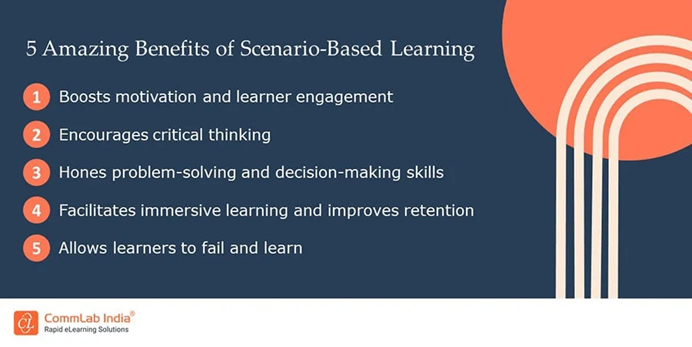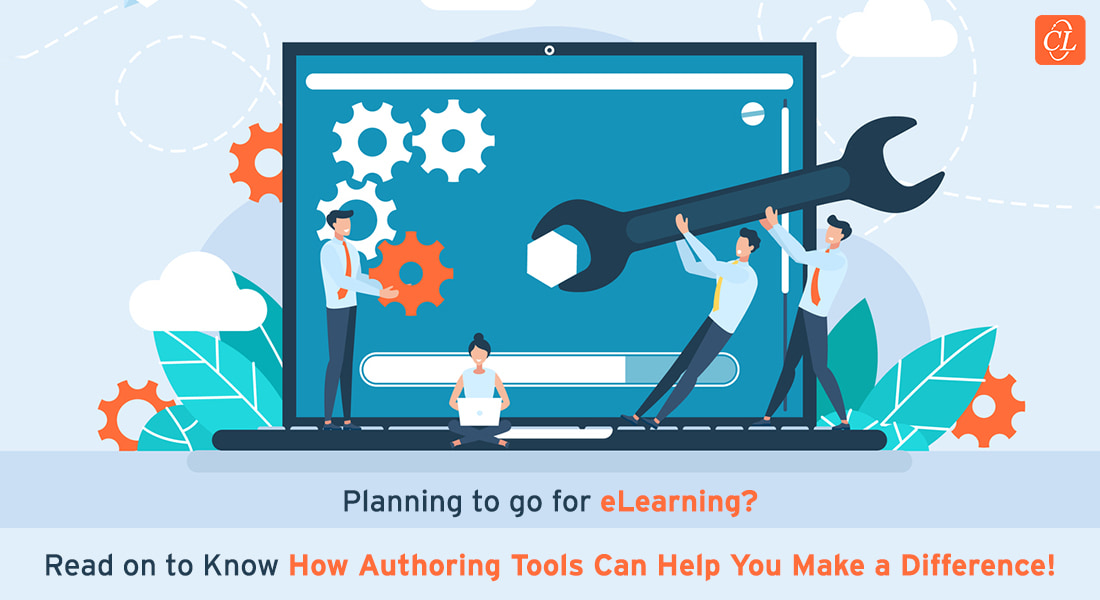Understanding the Principles of Learning Science to Craft Effective Rapid eLearning Modules

In today's fast-paced digital world, where information is constantly evolving and learners demand immediate access to knowledge, rapid eLearning has emerged as a vital tool for delivering timely and effective training. However, the mere speed of development isn't enough to ensure the success of rapid eLearning. It's critical to understand and apply the principles of learning science, which provide insights into how people learn most effectively.
→ Download eBook Now: Rapid eLearning Authoring Tools
Table of Contents
- What are the Foundational Principles of Learning Science?
- How to Translate Learning Science into Rapid eLearning Design?
- How to Apply Learning Science to Specific eLearning Modalities?
- What are the Practical Tips and Tools for Implementing Learning Science in Rapid eLearning Development?
The ability to create and deploy eLearning modules quickly, without compromising on quality, is essential for organizations looking to keep their workforce up-to-date and competitive. By bridging the gap between learning science and rapid eLearning development, we can create modules that not only meet the demands for speed but also deliver meaningful and impactful learning experiences. This blog will equip you with the knowledge and strategies to create impactful learning experiences that meet the challenges of today's dynamic learning landscape.
Curious to Understand the Principles of Learning Science to Design Effective Rapid eLearning Modules?
Here’s how you can translate the various principles into your design process:
- Breaking Down Complex Information into Manageable Units
- Providing Structure and Support for Gradual Progression
- Engaging Learners through Interactions and Activities
- Tailoring Learning Experiences to Individual Needs
- Providing Timely and Actionable Information for Improvement
What are the Foundational Principles of Learning Science?
Here’s a selection of key theories and principles that provide valuable insights into the learning process and inform the design of engaging and effective rapid eLearning modules.

1. Cognitive Load Theory (CLT)
Cognitive Load Theory (CLT) highlights the critical role of managing mental effort in learning. It proposes that our working memory, which is responsible for processing new information, has limited capacity. Therefore, CLT emphasizes minimizing extraneous cognitive load, which refers to unnecessary mental effort spent on tasks that are not directly related to learning. By reducing extraneous cognitive load, individuals can free up cognitive resources for germane cognitive load, which is the mental effort dedicated to understanding and integrating new information. This focus on germane cognitive load leads to improved learning outcomes, as learners are able to devote more mental resources to comprehending and retaining new knowledge.
In short, CLT provides a framework for optimizing learning by managing cognitive load. By minimizing extraneous cognitive load and directing cognitive resources towards germane cognitive load, learners can enhance their understanding, retention, and overall learning effectiveness.
Implication for Rapid eLearning
- Chunk information into smaller, manageable units to reduce cognitive overload.
- Use clear and concise language, avoiding jargon and overly complex explanations.
- Provide visual aids and multimedia to support understanding and reduce reliance on text.
- Eliminate distractions and irrelevant information that compete for attention.
2. Multimedia Learning Principles
Richard Mayer's extensive research led to the development of the multimedia principle. This principle suggests that people learn more effectively when information is presented in both words and pictures, rather than words alone. Mayer's research found that when people are exposed to information in multiple formats, they are more likely to remember and understand it. This is because the visual and verbal representations of information work together to create a more complete and memorable learning experience.
The multimedia principle has several implications for corporate training. First, it suggests that trainers should use a variety of instructional methods to appeal to different learning styles. Second, it highlights the importance of creating visually appealing and engaging learning materials. Third, it demonstrates that learners should be encouraged to use multiple senses when learning new information. By following the multimedia principle, educators can create more effective learning environments and help learners achieve their full potential.
Implication for Rapid eLearning
- Use relevant images, diagrams, and animations to complement textual content.
- Ensure visual elements are closely aligned with the verbal explanations.
- Consider using narration or audio to explain complex concepts or processes.
- Avoid overloading learners with too much visual or auditory information simultaneously.
3. Social Learning Theory
Social Learning Theory, introduced by Albert Bandura in the 1960s, underscores the significance of observing and imitating the actions, attitudes, and behaviors of others in shaping our learning and behavior. This theory posits that learning is a social process influenced by our interactions with others, particularly those we admire or perceive as role models. At the core of Social Learning Theory is the concept of observational learning or modeling, where individuals learn by observing the behaviors of others, the consequences of those behaviors, and the rewards or punishments that follow. This observation process involves paying attention to the actions, attitudes, and emotional responses of others, encoding these observations in memory, and subsequently replicating them in our own behavior.
Role models play a crucial role in Social Learning Theory, serving as sources of information and inspiration, providing individuals with examples of desirable and undesirable behaviors. Young people, in particular, are highly susceptible to the influence of role models, often imitating the behaviors and attitudes of their parents, teachers, and peers. Feedback from others is another essential aspect of Social Learning Theory. Positive feedback, such as praise, encouragement, and rewards, reinforces desired behaviors, making them more likely to be repeated. Conversely, negative feedback, such as criticism, punishment, or disapproval, discourages certain behaviors, leading to their reduction or elimination.
Implication for Rapid eLearning
- Incorporate opportunities for collaboration and interaction among learners.
- Use case studies, testimonials, or expert interviews to model desired behaviors or skills.
- Provide opportunities for peer feedback and social reinforcement.
- Create a sense of community and shared learning through online discussions or forums.
4. Constructivist Learning Theory
Constructivism is a learning philosophy that asserts that learners actively construct their own knowledge and understanding through interactions with their environment. It emphasizes that learners are not passive recipients of information but rather active participants in the learning process. Constructivists believe that knowledge is not something that can be simply transmitted from trainer to learner but rather must be constructed by the learner through their own experiences and interactions.
Constructivism emphasizes the importance of providing opportunities for exploration, experimentation, and reflection in the learning process. This allows learners to actively engage with the material and construct their own understanding. Constructivist trainers strive to create learning environments that are rich in opportunities for hands-on activities, problem-solving, and collaboration. They also encourage learners to reflect on their own learning and to make connections between new information and their existing knowledge and experiences.
Implication for Rapid eLearning
- Design activities that encourage learners to actively engage with the material.
- Use scenarios, simulations, or problem-solving exercises to promote the application of knowledge.

- Provide opportunities for learners to reflect on their learning and make connections to their own experiences.
- Offer choices and flexibility to cater to diverse learning styles and preferences.
5. Self-Determination Theory (SDT)
Self-Determination Theory (SDT) emphasizes the significance of intrinsic motivation in learning. SDT posits that individuals are naturally driven to seek out challenges, learn, and grow. This intrinsic motivation is fueled by the fulfillment of three fundamental psychological needs: autonomy, competence, and relatedness.
Autonomy refers to the feeling of control and choice over one's actions and decisions. When learners feel autonomous, they are more likely to be engaged in the learning process and take ownership of their learning. Competence refers to the sense of mastery and accomplishment that comes from successfully completing a task or skill. When learners feel competent, they are more likely to persist in the face of challenges and set higher goals for themselves. Relatedness refers to the feeling of connection and belonging to others. When learners feel related to their peers, trainers, and the learning environment, they are more likely to be motivated and engaged in the learning process.
Implication for Rapid eLearning
- Provide learners with some degree of control over their learning experience, such as choice of activities or pacing.
- Design activities that challenge learners but also provide opportunities for success and mastery.
- Foster a sense of connection and belonging through social interaction and community building.
How to Translate Learning Science into Rapid eLearning Design?
This section bridges the gap between theoretical learning science principles and their practical application in the rapid eLearning development process. We'll delve into specific design strategies derived from these principles, providing you with actionable techniques to create engaging and effective learning experiences.
1. Chunking Content: Breaking Down Complex Information into Manageable Units
Chunking is an effective instructional technique aligned with Cognitive Load Theory. It entails organizing information into smaller, manageable units to reduce cognitive strain and promote optimal learning. Practical applications of chunking include dividing lengthy text into concise paragraphs or bullet points, employing headings and subheadings to create visual structure, breaking down complex processes into step-by-step instructions, and utilizing microlearning modules that deliver focused, bite-sized content. By implementing these strategies, trainers can enhance learners' ability to process and retain information, alleviate mental overload, and facilitate deeper understanding and engagement in the learning process.

Rapid eLearning Authoring Tools
Explore the What and the Why of Popular Rapid eLearning Development Tools, and GenAI Tools
- Categories of eLearning Authoring Tools
- Considerations to Choose Your Next Authoring Tool
- Features of Popular Rapid Authoring Tools
- GenAI Tools to Create Content, Graphics, Audio, and Video
2. Scaffolding Learning: Providing Structure and Support for Gradual Progression
Scaffolding is a training approach that provides learners with structured support and guidance as they progress through new material. It aligns with Constructivist Learning Theory, which emphasizes building upon existing knowledge. In practice, scaffolding involves starting with foundational concepts and gradually introducing more complex ideas. Examples, analogies, and real-world scenarios are employed to make connections and enhance understanding. Practice exercises with increasing levels of difficulty are offered to reinforce learning. Additionally, hints, feedback, and opportunities for remediation are provided to support learners as they navigate new content, helping them to build a solid foundation of understanding and ultimately achieve their learning goals.
3. Active Learning Strategies: Engaging Learners through Interactions and Activities
Active learning is a powerful pedagogical approach that encourages learners to take an active role in their learning process. Unlike passive learning, where information is simply received, active learning engages learners in activities that require them to apply, manipulate, and critically think about the knowledge they are acquiring. This approach aligns with Constructivist and Social Learning Theories, which emphasize the significance of active participation, social interaction, and knowledge construction.
By incorporating practical applications such as quizzes, polls, interactive exercises, and simulations, learners can practice skills in a contextualized environment. Facilitating discussions and collaborative problem-solving activities further enhances the learning experience by allowing learners to share ideas, perspectives, and solutions. Active learning not only promotes deeper understanding and retention of information but also develops critical thinking, problem-solving, and communication skills, empowering learners to become active participants in their educational journey and lifelong learners.
4. Personalization and Adaptivity: Tailoring Learning Experiences to Individual Needs
Personalization and adaptivity in learning aim to create a customized and learner-centric experience. This approach aligns with the Self-Determination Theory, which recognizes the significance of autonomy and competence in promoting motivation and engagement. Practical applications of personalization and adaptivity include offering learners choices in content, activities, or pacing, ensuring content aligns with prior knowledge through pre-assessments, providing adaptive feedback and guidance based on performance, and using learning analytics to track progress and identify areas for improvement. By tailoring the learning experience to individual needs and preferences, personalization and adaptivity empower learners to take ownership of their learning journey, fostering a sense of autonomy and competence, and ultimately enhancing learning outcomes.
5. Feedback and Assessment: Providing Timely and Actionable Information for Improvement
Feedback and assessment are essential components of the learning process, as they help learners understand their strengths and weaknesses and promote improvement. Effective feedback should be timely, specific, and actionable. Practical applications of effective feedback include providing immediate feedback after quizzes or interactive exercises, using formative assessments to check for understanding throughout the module, offering personalized feedback that highlights strengths and areas for improvement, and providing opportunities for learners to reflect on their performance and set goals for future learning. By incorporating these strategies, trainers can help learners develop a deeper understanding of the material and make meaningful progress.
How to Apply Learning Science to Specific eLearning Modalities?
1. Microlearning: Maximizing Impact in Bite-Sized Learning Experiences
Microlearning, a contemporary approach to training, centers around delivering concise, focused learning content in short bursts, usually lasting only a few minutes. This approach aligns well with Cognitive Load Theory, which emphasizes the importance of reducing cognitive overload and catering to learners' increasingly shorter attention spans. By chunking content into easily digestible micro-lessons, using clear and concise language, focusing on a single learning objective per lesson, incorporating engaging visuals and interactive elements, and providing opportunities for quick knowledge checks and practice activities, microlearning optimizes the learning process and enhances engagement, making it an effective strategy for the modern era.

2. Scenario-Based Learning: Creating Realistic and Relevant Learning Contexts
Scenario-based learning is an immersive approach that places learners in realistic situations, enabling them to apply their knowledge and skills to solve problems or make informed decisions. It aligns with Constructivist Learning Theory, which promotes active learning by providing opportunities for exploration, experimentation, and reflection.
In practice, scenario-based learning involves designing scenarios that resonate with learners' real-world experiences, establishing clear learning objectives and expectations, offering choices and consequences to simulate real-life decision-making, providing feedback and guidance to support understanding and reflection, and encouraging collaboration and discussion among learners to share perspectives and solutions. This approach fosters the development of critical thinking, problem-solving, and decision-making skills, empowering learners to navigate real-world challenges effectively.
3. Gamification: Enhancing Engagement and Motivation through Game Elements
Gamification incorporates game elements, such as points, badges, and leaderboards, into the learning experience to enhance engagement and motivation. It aligns with Self-Determination Theory by fulfilling learners' needs for autonomy, competence, and relatedness.
Learning Science in Practice
- Use game elements strategically to support learning objectives, not just for entertainment
- Provide clear goals and challenges to create a sense of purpose and accomplishment
- Offer opportunities for competition and collaboration to foster social interaction
- Provide frequent feedback and rewards to recognize progress and effort
- Allow learners to personalize their learning experience through choices and customization
4. Mobile Learning: Designing for On-the-Go Learning Experiences
Mobile learning, harnessing the prevalence of smartphones and tablets, revolutionizes learning by delivering content anytime, anywhere. It aligns with Self-Determination Theory, granting learners flexibility and control over their learning journeys. To optimize mobile learning, content should be tailored for smaller screens and touch-based interactions. Microlearning and bite-sized content cater to short attention spans. Location-based learning and augmented reality create immersive experiences. Offline access enables learning in areas with limited connectivity. Accessibility features ensure inclusivity for learners with disabilities. By incorporating these principles, mobile learning empowers learners to engage in personalized and effective learning experiences.
5. Virtual Reality and Augmented Reality: Immersive Learning for the Future
VR and AR technologies offer the potential to create highly immersive and interactive learning experiences. They align with Constructivist Learning Theory by enabling learners to explore and manipulate virtual environments and objects.
Learning Science in Practice
- Design VR and AR experiences that are aligned with specific learning objectives
- Provide clear instructions and guidance to navigate the virtual environment
- Incorporate interactive elements and simulations to promote active learning
- Use realistic visuals and sounds to create a sense of presence and immersion
- Consider accessibility for learners with disabilities
What are the Practical Tips and Tools for Implementing Learning Science in Rapid eLearning Development?
1. Storyboarding and Prototyping: Planning for Effective Learning Experiences
- Utilize storyboarding to visually outline the structure and flow of your eLearning module. This helps ensure alignment with learning objectives and enables you to identify potential areas for improvement before full development.
- Create prototypes to test and refine your design concepts. Gather feedback from learners and stakeholders to validate your approach and make necessary adjustments early in the process.
2. Choosing the Right Authoring Tools: Leveraging Technology for Rapid Development
- Select authoring tools that support rapid development and offer features aligned with learning science principles. Look for tools that enable easy content chunking, interactive elements, and multimedia integration.

- Consider cloud-based authoring tools for collaborative development and seamless content updates.
- Explore AI-powered tools that can assist with content creation, accessibility checks, and personalized learning pathways.
3. Incorporating Multimedia Elements: Visuals, Audio, and Interactive Content
- Use high-quality images, videos, and animations that are relevant to the content and support learning objectives.
- Ensure visual elements are clear, uncluttered, and optimized for different screen sizes.
- Incorporate audio narration or sound effects to enhance engagement and provide additional context.
- Use interactive elements like quizzes, polls, and simulations to promote active learning and knowledge application.
4. Accessibility Considerations: Ensuring Inclusivity for All Learners
- Design eLearning modules with accessibility in mind from the outset. Follow WCAG (Web Content Accessibility Guidelines) to ensure content is perceivable, operable, understandable, and robust.
- Provide alternative text descriptions for images, captions for videos, and transcripts for audio content.
- Use clear and simple language, avoiding jargon and complex sentence structures.
- Ensure sufficient color contrast and provide keyboard navigation options.
5. Evaluating and Iterating: Continuously Improving eLearning Modules
- Gather feedback from learners and stakeholders through surveys, interviews, or focus groups.
- Use learning analytics to track learner progress, identify areas of difficulty, and measure the effectiveness of the module.
- Make data-driven decisions to refine and improve your eLearning modules based on feedback and analytics.
- Embrace a culture of continuous improvement, iterating on your designs based on insights and evolving learner needs.
Wrapping Up!
In the ever-evolving landscape of learning and development, rapid eLearning has emerged as a powerful tool to meet the demands of the modern learner. Throughout this blog, we have explored the foundational theories and principles of learning science and their practical applications in rapid eLearning design. Now, the next step is to design your modules, and you will require an authoring tool for the same. Here’s a comprehensive guide that will help you understand everything about various authoring tools and eventually assist you in choosing the best one for your needs. Download the eBook now, it's free!





